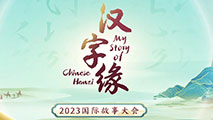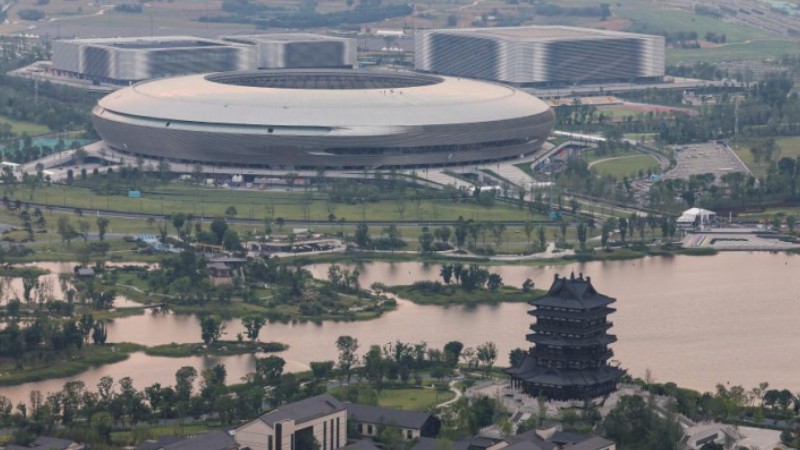Rural artists brighten up country life in east China
HANGZHOU, June 28 (Xinhua) -- In June, at an exhibition in the Hangzhou Asian Games Museum, a scroll painting drawn by five farmers-turned-painters of Yudong Village in east China's Zhejiang Province attracted many visitors.
Using folk paper-cutting and other art techniques, the painting not only depicts the strong welcoming atmosphere in the countryside of the coming Asian Games but also shows the colorful life in the Chinese rural area.
Yudong, located in Gouxi Township of Quzhou City in the mountains of western Zhejiang, has more than 800 villagers, among whom over 300 can paint. They have won many awards over the years and are known as the "rural Picassos."
Yu Xiaoqin, Party chief of Yudong, said that in the past, the village mainly cultivated rice and citrus and made handicrafts such as lanterns. In the 1960s and 1970s, the local cultural center started to organize painting training, and many villagers mastered the skill over the years.
In June 2003, Zhejiang launched the Green Rural Revival Program, which planned to renovate about 10,000 incorporated villages and transform about 1,000 central villages among them into examples of moderate prosperity in all respects. Over two decades, the program has created thousands of beautiful villages, fundamentally changing the face of the province's countryside.
Yudong also seizes the opportunity and rides the wave of the program. In recent years, painting not only fills farmers' pockets in Yudong but also enriches their spiritual life, injecting new vitality into rural revitalization.
In the past 20 years since the implementation of the program, a number of villages in Zhejiang have managed to utilize art to empower their development, giving new definitions and connotations to beautiful villages.
In the cultural hall of Luojiakeng Village in Ninghai City of Zhejiang, more than 20 tourists made a unique style of pressed flower fans under the demonstration of a local villager called Shu Meili.
From an ordinary farmer to a rural artist, Shu, 43, once spent a year learning to arrange flowers, make fans, and other skills. Today, she not only secures a stable income every month but also sees her business getting better.
Shu's success offers a glimpse into Luojiakeng's development model, which is utilizing art for rural revitalization.
"The changes in the village can be described as earth-shaking," said Luo Chunmao, an official from Luojiakeng.
Luojiakeng was once a dirty and disorderly backwater area. The environment in the village has been greatly improved after the strenuous efforts of the local government, but one can hardly relate it to the beautiful countryside.
However, great changes took place in the village after the arrival of some artists in residence, who contributed art elements to its rural revitalization campaign.
Inspired by the artists, local villagers decided to renovate their houses and gardens using stones, twigs, and cob bricks as raw materials and draw wall paintings, attracting thousands of tourists with the fascinating country-style decorating.
"With culture, there is vitality, charm, and a unique heritage," said Gu Yikang, chief expert of Zhejiang Zhijiang rural revitalization research institute, adding that the countryside illuminated by the "rural Picassos'" art is a direction for China's future rural development.
Photos
Related Stories
Copyright © 2023 People's Daily Online. All Rights Reserved.









